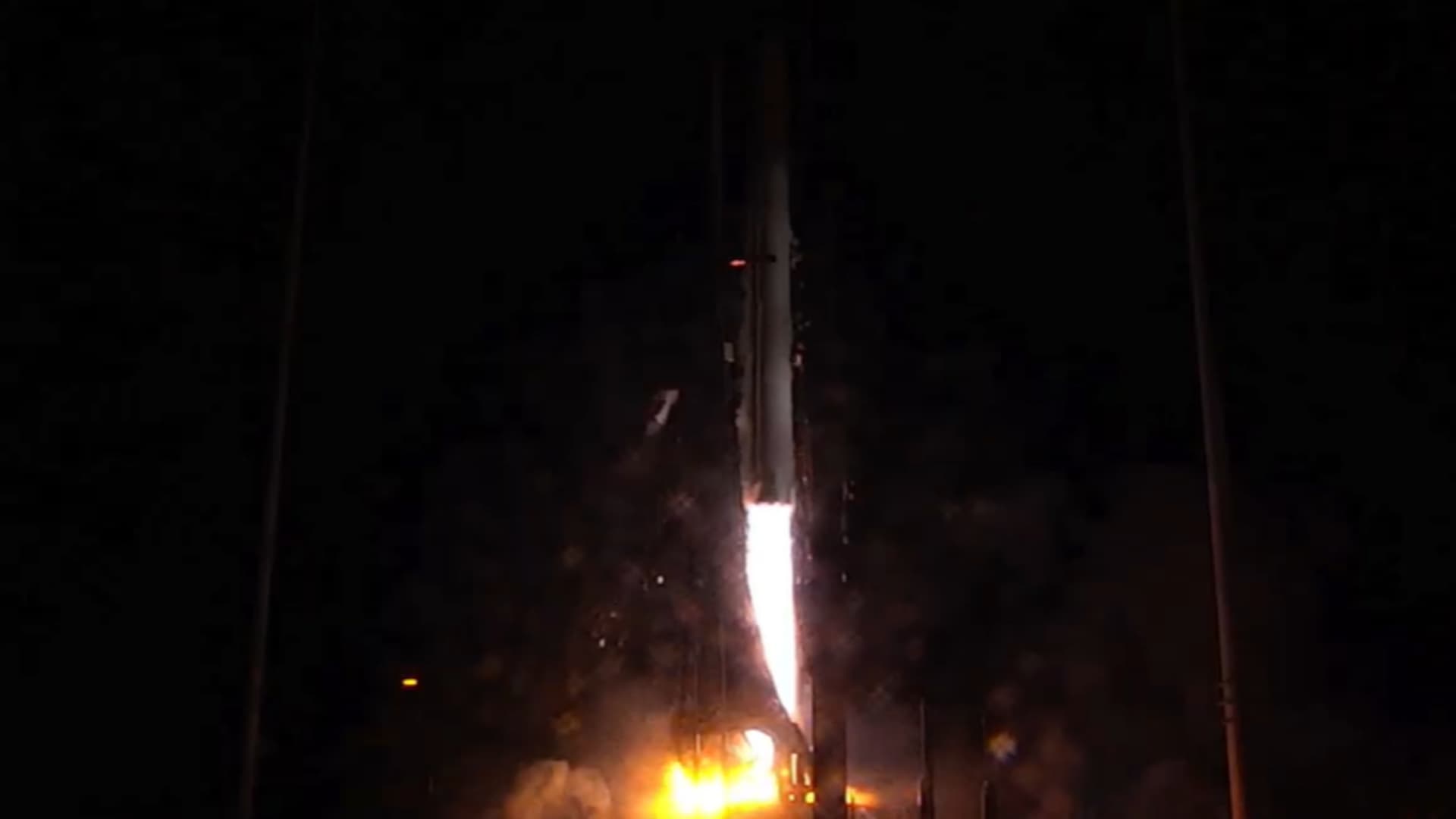
The company’s Terran 1 rocket lifts off from LC-16 at Cape Canaveral, Florida.
Relativity Space
Relativity Space, a 3D-printing specialist, launched the inaugural flight of its Terran 1 rocket late on Wednesday night, which successfully met some mission objectives before failing to reach orbit.
Terran 1 lifted off from LC-16, a launchpad at the U.S. Space Force’s facility in Cape Canaveral, Florida, and flew for about three minutes. While the rocket cleared a key objective — passing the point of maximum atmospheric pressure during an orbital launch, known as Max Q — its engine sputtered and shut down early, shortly after the second stage separated from the first stage, which is the larger, lower portion of the rocket known as the booster.
Relativity launch director Clay Walker confirmed that there was an “anomaly” with the upper stage. The company said it will give “updates over the coming days” after analyzing flight data.
Sign up here to receive weekly editions of CNBC’s Investing in Space newsletter.
Despite falling short of reaching orbit, the “Good Luck, Have Fun” mission represents a significant step forward for the company, and helped demonstrate the viability of its ambitious manufacturing approach.
While many space companies utilize 3D printing, also known as additive manufacturing, Relativity has effectively gone all-in on the strategy.
The company believes its approach will make building orbital-class rockets much faster than traditional methods, requiring thousands less parts and enabling changes to be made via software. The Long Beach, California-based venture aims to create rockets from raw materials in as few as 60 days.
The blue flames of the Terran 1 rocket, which is powered by a mixture of liquid methane and liquid oxygen (or methalox), as it launched.
Relativity Space
Terran 1 stands 110 feet high, with nine engines powering the lower first stage, and one engine powering the upper second stage. Its Aeon engines are 3D-printed, with the rocket using liquid oxygen and liquid natural gas as its two fuel types. About 85% of this first Terran 1 rocket was 3D-printed.
Relativity prices Terran 1 at $12 million per launch. It’s designed to carry about 1,250 kilograms to low Earth orbit. That puts Terran 1 in the “medium lift” section of the U.S. launch market, between Rocket Lab’s Electron and SpaceX’s Falcon 9 in both price and capability.
The debut launch did not carry a payload or satellite inside the rocket, with Relativity emphasizing the launch represents a prototype.
The company’s Terran 1 rocket stands on its launchpad at LC-16 in Cape Canaveral, Florida ahead of the inaugural launch attempt.
Trevor Mahlmann / Relativity Space








